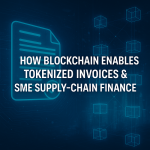The internet has evolved through several stages, with the latest iteration being Web3. Web3 represents the next phase of the internet—one that is decentralized, user-centric, and powered by blockchain technology. It promises to disrupt many industries, including finance, entertainment, and digital services, by shifting control away from centralized entities to individual users.
To understand Web3 VS Web2, it’s important to first know what Web3 actually is. Web3 introduces concepts like decentralization, blockchain, cryptocurrencies, and smart contracts into the digital ecosystem. It is a significant departure from Web2, which is the current version of the internet, where platforms like Facebook, Google, and Amazon dominate the landscape, collecting vast amounts of data and controlling user interactions.
This article explores the differences between Web3 and Web2, highlighting the benefits and limitations of each, as well as the potential implications for users and businesses alike.
What is Web3?
Web3 refers to the third generation of the internet. It is based on decentralized technologies such as blockchain, which eliminates the need for centralized intermediaries, giving users more control over their data, identity, and digital assets. Unlike Web2, where platforms and corporations control user data and content, Web3 aims to democratize the internet by redistributing power and ownership to individuals.
Are you curious about Web3 but don’t know where to start?
If YES, this thread is for you. Let’s explore what Web3 is, how it evolved, and how YOU can navigate it as a beginner
What is Web3?
Web3 is the next evolution of the internet, built on blockchain technology. It allows…— Shola (@itsSh0la) December 13, 2024
In Web3, users can engage directly with decentralized applications (dApps), interact with smart contracts, and participate in governance through decentralized autonomous organizations (DAOs). This system relies heavily on cryptocurrencies to facilitate peer-to-peer transactions without relying on traditional banking systems.
By shifting away from centralized servers, Web3 creates a more transparent, secure, and user-governed web. This makes it a promising framework for applications like decentralized finance (DeFi), NFTs, and blockchain-based social networks.
Web3 VS Web2: The Core Differences
What is Web3?
Here’s everything you need to know in 7 tweets
1/ Web1 → Web2 → Web3
Web1: Read-only (static websites).
Web2: Read-write (social media, e-commerce).
Web3: Read-write-own (blockchain, decentralization). What web3 means
— Derrick.io (@JusttDerrick) December 29, 2024
When comparing Web3 and Web2, it’s essential to understand how the two web versions differ in terms of data control, user interaction, and technological infrastructure. Here’s a breakdown of the key distinctions:

1. Centralization vs. Decentralization
- Web2: The current internet (often referred to as Web2) is dominated by centralized platforms, where companies control the servers, databases, and infrastructure that power websites and applications. Examples include Google, Facebook, and Amazon. These companies collect massive amounts of user data and control content distribution, often monetizing user interactions through advertising or selling data.
- Web3: In contrast, Web3 is decentralized, meaning there is no single entity controlling the entire network. Blockchain and distributed ledger technologies ensure that data is stored across multiple nodes, reducing the risk of data breaches and providing users with greater control over their personal information.
Key Difference: The centralized control of data in Web2 is replaced by user ownership and control in Web3.
2. Ownership and Data Control
- Web2: Under the Web2 paradigm, users relinquish control over their data. The platforms that users interact with—whether social media sites, search engines, or e-commerce platforms—own and monetize the data generated by users. This centralized model has led to concerns over privacy, data breaches, and the misuse of personal information.
- Web3: Web3 empowers users to own their data. With the use of blockchain technology, individuals can control their own identity and personal information. This opens up new possibilities for data privacy and consent, where users can choose to share only the information they want, often in exchange for cryptocurrency or tokens.
Key Difference: Web3 offers data sovereignty, allowing users to control their data, while Web2 centers on data centralization by large corporations.
3. Monetization and Business Models
- Web2: In Web2, the dominant business model revolves around ad-based revenue. Companies like Google, Facebook, and YouTube monetize user interactions by collecting data to target users with personalized ads. Users often engage with platforms for free, but the platforms profit immensely from this engagement through ad sales and data exploitation.
- Web3: Web3 shifts the focus to a more equitable business model, often using cryptocurrencies and tokens to enable direct transactions. Users can generate income on a blockchain-based platform for their participation, whether through staking, content creation, or governance in decentralized networks. Additionally, creators and service providers can monetize their work without needing intermediaries like advertisers or platform owners.
Key Difference: The Web3 ecosystem enables direct monetization via cryptocurrencies, while Web2 relies heavily on advertisement-driven revenue.
4. Interactivity and User Experience
- Web2: The interaction model in Web2 is based on walled gardens and closed ecosystems. Users interact with a platform and its ecosystem, but they cannot easily transfer their data or digital assets between platforms. For example, a user’s social media profile on Facebook cannot easily migrate it to another platform.
- Web3: Web3 is inherently more interoperable. With decentralized applications (dApps), users can move data, assets, and identities seamlessly across different platforms. For example, a user’s digital identity, created on one Web3 platform, can be used on other platforms that support the same blockchain standard.
Key Difference: Web3 is built for interoperability, while Web2 is based on closed ecosystems.
5. Transparency and Governance
- Web2: The governance of Web2 platforms is centralized. The platform owners, such as tech companies, control the rules, policies, and decisions that affect users. This includes how content is moderated, how data is used, and how the platform evolves. Users have little to no influence on these decisions.
- Web3: Web3 promotes decentralized governance through DAOs (Decentralized Autonomous Organizations), where decisions are made collectively by token holders or participants in the network. This creates more transparency, as the rules and operations are publicly available on the blockchain, and users can participate in governance and protocol upgrades.
Key Difference: Web3 allows for decentralized governance, whereas Web2 relies on centralized decision-making.
Benefits of Web3 Over Web2
The transition from Web2 to Web3 offers several advantages for users, businesses, and developers:

1. Enhanced Privacy and Security
With decentralized networks, Web3 significantly reduces the risks associated with centralized data breaches. Users have control over their data, which is stored in an encrypted and immutable form on the blockchain.
2. New Revenue Models
Web3 opens up new ways for creators, developers, and businesses to generate revenue without relying on ads or middlemen. Through tokens and blockchain-based economic systems, users can earn rewards directly.
3. Ownership and Control
One of the key promises of Web3 is that users can truly own their data, digital identities, and assets, which contrasts with the centralized nature of Web2, where companies control most aspects of the user experience.
4. Interoperability
Web3 fosters a more connected digital ecosystem where users can move between platforms with their assets and data intact, making the web more seamless and user-centric.
Challenges and Limitations of Web3
While Web3 offers many benefits, it is not without challenges:
- Adoption: Web3 requires users to understand and trust new technologies like blockchains, cryptocurrencies, and smart contracts. This can create a barrier for mass adoption, especially for those unfamiliar with the technology.
- Scalability: Many Web3 platforms are still in their infancy, and scalability remains a challenge. Handling large-scale applications on decentralized networks can lead to slower transaction times and higher fees.
- Regulatory Concerns: The decentralized nature of Web3 also raises questions regarding legal frameworks, tax compliance, and governance, which are still defining in various jurisdictions.
Conclusion: The Future of Web3 vs Web2
As Web3 continues to evolve, it holds the potential to revolutionize how we interact with the internet, shifting power away from centralized entities to individuals. The differences between Web3 and Web2 are stark, particularly in terms of ownership, governance, and monetization.
While Web2 will likely continue to dominate the internet for the foreseeable future, Web3 is rapidly growing and offers new possibilities for a more decentralized, user-governed, and transparent internet.
Websima, as the leading blockchain service provider in Dubai, is more than happy to help, if you are planning to start a blockchain-based business in Dubai. Blockchain, crypto and web3 web and website development, smart contract programming and development, Blockchain, Web3 and crypto company establishment are just a few out of many services that we provide. Feel free to contact us to book for a free consultation meeting with our talented team.





